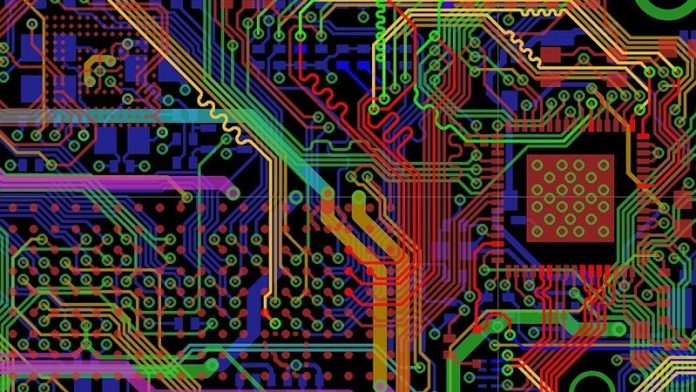If you plan to create a printed circuit board, many options exist. You can decide to make a 2-layer PCB, 4-layer PCB, 6-layer PCB, or 8-layer PCB. However, an 8-layer PCB has become one of the best for several applications.
To learn more about 8-layer PCB, here is everything you need to know. You will know what an 8-layer PCB is, why use an 8-layer PCB stackup, 8-layer PCB applications, and the best manufacturing techniques for an 8-layer PCB.
What is 8-layer PCB?
An 8-layer PCB is a circuit board with 8 layers of conductive materials. The layers are made of copper and help in connecting the components. Since it is a multilayer printed circuit board, it has vias space and sufficient routing space for applications that need several power islands.
Benefits of using an 8-layer PCB
There are numerous benefits of using an 8-layer PCB over 2-layer, 4-layer, and 6-layer PCBs. Here are the main benefits.
*Enhanced power distribution – due to the inner layers, an 8-layer PCB can manage to offer an enhanced power distribution.
*Reduce radiation – since an 8-layer circuit board has better signal integrity, it helps to reduce radiation emission.
*Cost effective – creating an 8-layer circuit board is cheaper than building a lower-layer circuit board. This is because it is more efficient for the manufacturer and uses less material.
*Increased reliability – An 8-layer PCB is more reliable than the lower circuit boards due to enhanced power distribution and signal integrity.
Why use an 8-Layer PCB stack-up?
There are many reasons why you need to use an 8-layer PCB stackup. Since it has four plane layers and four signal layers, it is one of the best options for many applications. Here are some reasons you need to use an 8-layer stackup.
*Increased signal integrity – one of the reasons an 8-layer PCB stack-up is the best choice is because it boosts the signal integrity of a circuit board.
When the 8-layer board is incorporated into an electronic gadget, it helps to maximize its functionality. Also, the presence of multiple ground planes ensures a functional board.
*Cuts down the cost of operation – another reason PCB manufacturers prefer 8-layer is that it reduces the cost of operation. Besides saving space on the board, 8-layer PCB stackups require very low maintenance.
*Reduces EMI – since the 8-layer PCB stackup helps reduce electromagnetic interference, it is the best choice for complex electronic devices.
In addition, the arrangement of an 8-layer stackup can help eliminate radiation.
8-layer PCB Stackup Applications
An 8-layer PCB stackup has become common in many sectors. They are commonly applicable in high-frequency applications since signal integrity is essential.
Moreover, an 8-layer PCB can be used in applications where thermal conductivity is vital. Here are some of the main applications of 8-layer stackup applications.
*Power amplifier boards
*High-speed digital boards
*LED lighting boards
*Thermal management solutions
*RF and Microwave boards
Hence, the 8-layer PCB stackups are found in various sectors, including the medical industry, aviation industry, automotive industry, chemical processing industry, and manufacturing industry, among many others.
8-Layer PCB manufacturing techniques
Due to technological advancements, more and more applications need 8-layer PCB stackups. Nevertheless, some challenges should be dealt with when designing the board.
Here are some of the 8-layer PCB manufacturing techniques.
- Direction of routing
An 8-layer PCB may have six signal layers in some cases. To reduce cross talks, it is essential to ensure the adjacent layer’s signal traces are routed perpendicular to each other.
Normally, subsequent layers direct the signal layers differently. However, they might be separated by ground planes or power to be safe.
- Signal integrity
When designing an 8-layer PCB, signal integrity is one aspect you cannot ignore. It would help if you created it in a way that will minimize signal integrity problems. Also, the stackup should be well designed to reduce cross talks.
- Thermal management
Another technique you need to consider when designing an 8-layer PCB is thermal management. Hence, it would help if you designed it to minimize any thermal problems.
- Power delivery
You need to think of power delivery when designing an 8-layer PCB stackup. This is another crucial aspect you cannot ignore. In addition, you need to design it in a method that will optimize power delivery to all elements of the board.
- Cost
Cost is an essential factor you cannot ignore when designing a PCB, especially an 8-layer PCB. Hence, you need to ensure the stack up is cost-effective.
- Return path
Whether the high-speed signal is at the inner layer or not, it is essential to design their return route. Therefore, ensure the signals have compact return paths for each layer. You need to start from the outermost layer to the rest.
- Manufacturability
Also, it would help if you thought of manufacturability when designing an 8-layer printed circuit board. Therefore, you must ensure you design the stack up in a method that is not hard to manufacture.
- Ground plane
To ensure there is no discontinuity of electrical resistance, it is essential to make sure there are no split ground planes. Also, ensure the outside layer’s elements are connected to the ground planes of the inner layers.
- Buried Vias or Blind Vias
To maximize the routing area, you can decide to have blind vias or buried vias. You can also contact your supplier on whether they can produce the component on the board, the manufacturer needs the last drill, CNC machine and so on.
Bottom-line
Creating an 8-layer PCB is a detailed process that needs a layered approach. Several techniques must be used to ensure the board functions properly.
The 8-layer PCB stackup is mainly used to manufacture several electronic devices. Due to its numerous benefits, many complex devices feature 8-layer stackups. Hence, the board’s role in modern electronic gadgets cannot be underrated.








